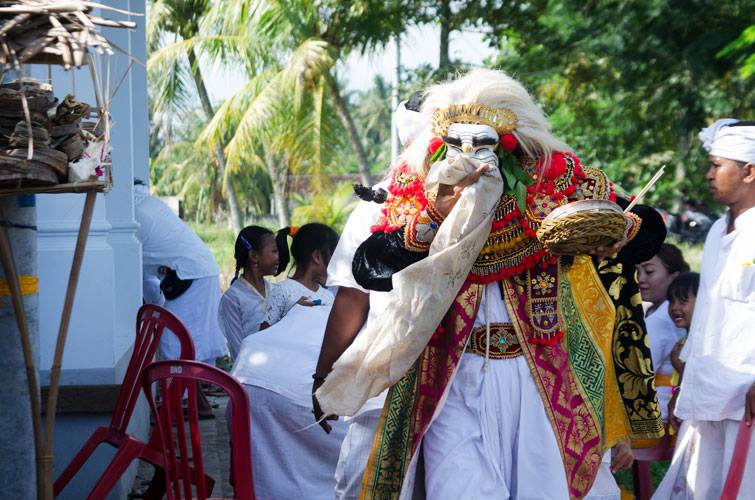A girl performs a Rejang Dewa dance during a traditional ritual in Kesiman, Bali. In its recent conference in Namimbia, UNESCO awarded Rejang Dewa, along with another eight Balinese dances, with world cultural heritage status.
Bali warmly welcomed the recognition by UNESCO of nine Balinese dances as part of humanity’s intangible cultural heritage announced during the 10th session of UNESCO’s Intergovernmental Committee for the Safeguarding of Intangible Cultural Heritage in Windhoek, Namibia.
The recognition will strengthen Indonesia’s position in global culture. It will also boost our desire to preserve traditional dances,’ prominent Balinese artist and scholar I Made Bandem said on Thursday.
On its website, unesco.org, the UN organization announced that the committee meeting in Namibia had inscribed 20 new elements on the Representative List of the Intangible Cultural Heritage of Humanity.
Among the 20 elements inscribed are three genres of traditional dance in Bali.
Also Read – Everything your website needs from start-up to success
‘Traditional Balinese dances, performed by men and women, consist of three categories ‘ sacred, semi-sacred and those meant for enjoyment by communities in general. Symbolizing particular traditions, customs and religious values, the dances consist of various movements and facial expressions to music played on the gamelan. The performers, who wear brightly colored costumes with floral and faunal motifs, need to be disciplined, humble, charismatic and inject spiritual energy into the performances. The dances are mainly transmitted informally to groups of children,’ the website said.
Along with the Balinese dances, UNESCO also inscribed other cultural heritage elements from across the world such as the Wititi dance of the Colca Valley in Peru, bagpipe culture from Slovakia, and the epic art of Gorogly from Turkmenistan.
The genres of Balinese traditional dance comprise three wali (sacred dances): Rejang, Sanghyang Dedari and Baris Upacara; three bebali (semi-sacred dances) Topeng Sidakarya, Gambuh and Wayang Wong; and three balhi balihan (entertainment dances): Legong Kraton, Joged Bumbung and Barong Ket Kuntisraya .
‘Bali actually has hundreds of traditional dances. Unfortunately, we could not propose all the dances so we decided to propose these nine dances for now, and hope we can propose more dances in the future,’ Bandem said.
Denpasar’s Indonesian Arts Institute (ISI) dance professor, I Wayan Dibia, expressed his optimism for the future of Balinese dance. ‘We do not worry about how to preserve the traditional dances as many dances are favored by the Balinese younger generation,’ Dibia said.
Bali Culture Agency head, Dewa Putu Beratha, said UNESCO recognition would be followed up with several programs to preserve the dances. He said the central government, the provincial administration, as well as regency and city administrations were committed to providing infrastructure to preserve and develop Balinese dance.
www.thejakartapost.com

